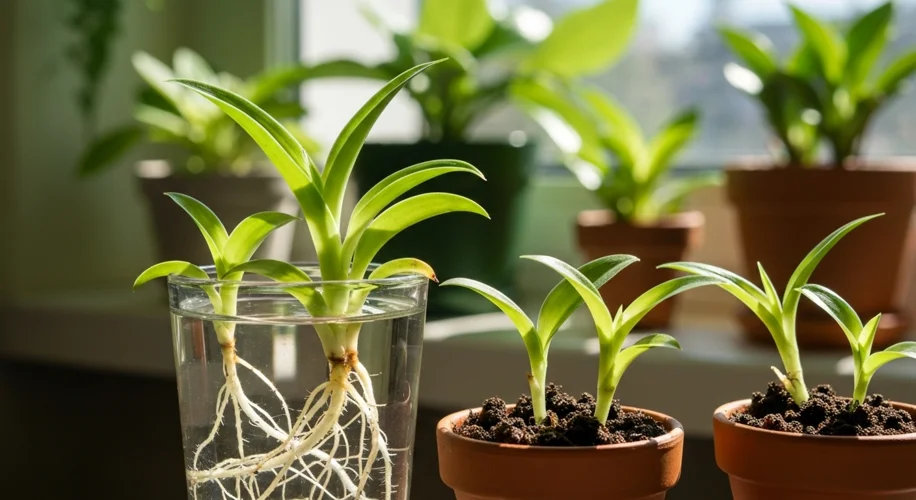If you’re a plant enthusiast, you’ve probably faced this delightful dilemma: your spider plant, Chlorophytum comosum, is producing a lot of babies. These little offsets, also known as plantlets, sprout on long stems and can quickly multiply, leaving you wondering what to do with your ever-growing spider plant family.
I’ve been there! My first spider plant was a prolific producer, and soon I had a small nursery on my hands. Thankfully, these babies are incredibly easy to propagate and have many uses.
What Exactly Are Spider Plant Babies?
Those little plantlets dangling from your spider plant are essentially clones of the mother plant. They emerge on long, arching stems and have tiny roots already forming at their base. They’re nature’s way of helping the plant spread.
Simple Propagation: Getting Started
This is the easiest part. When the plantlets are still attached to the mother plant, you can often see tiny roots developing near the base of the baby plant. Here are a few ways to get them started:
- Water Propagation: Snip the plantlet off the stem, leaving a short piece of the stem attached. Remove the lowest leaves so the roots will be submerged. Place the cut end in a small jar or glass of water. Change the water every few days. Roots should appear within a few weeks. Once the roots are an inch or two long, you can pot them in soil.
- Direct to Soil: You can also plant the babies directly into small pots filled with potting mix. Keep the soil consistently moist, and they should establish themselves. I find this method works best when the plantlet already has visible roots.
- With Water First, Then Soil: Some people prefer to root them in water until they have a good root system, then transfer them to soil. This gives you a chance to watch the root development, which is quite satisfying!
Creative Uses for Your Spider Plant Sprouts
Once you have a few rooted babies, the possibilities open up:
- Gifting: Plant enthusiasts always appreciate a new plant! Pot them up in small nursery pots or even cute repurposed containers and share them with friends, family, or neighbors. It’s a wonderful way to spread some green joy.
- Plant Swaps: Connect with other gardeners in your community. Many local gardening groups or even online forums organize plant swaps. It’s a fantastic way to trade your spider plant babies for something new and exciting for your own collection.
- Decorate: Don’t underestimate the charm of a whole collection of small spider plants. You can group them together on a windowsill, a shelf, or even hang them in macrame hangers. They create a lovely cascade of green.
- Fill Gaps: Do you have an empty corner or a bare spot on a shelf? A few well-placed spider plants can add instant life and color.
- Indoor Jungle: As your collection grows, you can start to fill your home with these easy-care plants. They’re great for purifying the air too!
Caring for Your New Spider Plants
Newly potted spider plant babies are relatively low-maintenance. They prefer bright, indirect light and consistently moist (but not soggy) soil. As they mature, they’ll become the robust, plant-producing plants you know and love.
So, the next time your spider plant showers you with babies, embrace the abundance! It’s a simple, rewarding part of gardening that allows you to share the love of plants and beautify more spaces in your home and beyond.

